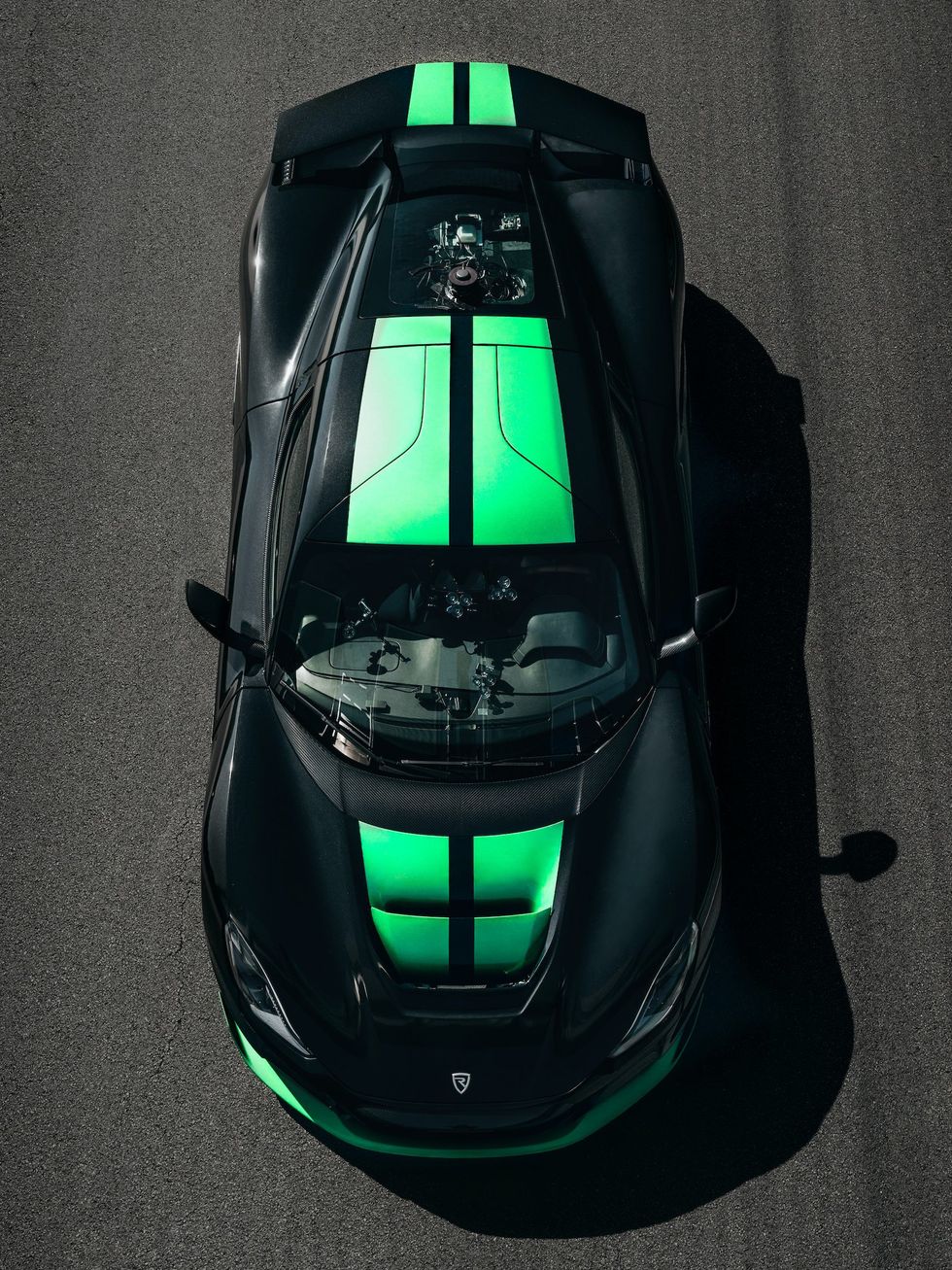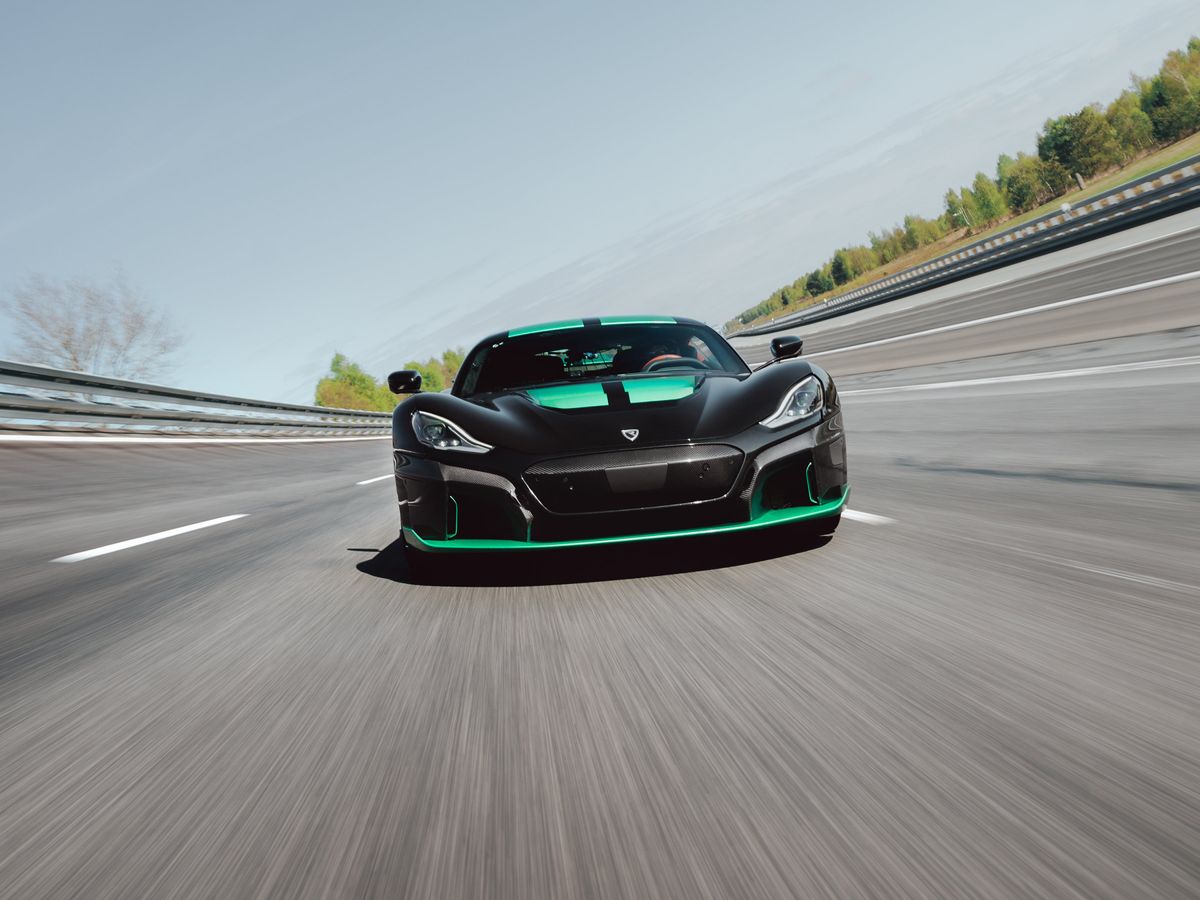A few decades ago, any car with 400 horsepower—say, a 1992 Dodge Viper—came across as 1992-era Arnold Schwarzenegger strong. The McLaren F1’s 620 hp seemed like something from another universe, as did its US $1 million price tag.
Today, attainable internal combustion engine cars like the Corvette Z06 or BMW M5 routinely top 600 hp, and record-chasing hypercars bring 1,500 or more. But even the most ludicrous gasoline burners are beginning to give way to EVs, in both sheer muscle and speed. Witness the new Rimac Nevera, the speed-record setting $2.2 million hypercar from Croatian wunderkind Mate Rimac. Unveiled in the United States last summer at the prestigious Pebble Beach concours, the Nevera saw its first production specimen delivered to former Formula 1 driving champion Nico Rosberg.
And if Rosberg needed justification for his seven-figure purchase, Rimac delivered: The Nevera set 23 world speed records on a single day on a German test track in May, including a biggie that also accounts for how fast a car slows down: From 0 to 400 kilometers per hour (249 miles per hour) and back to 0 in 29.94 seconds. That topped the former 31.49-second mark set in 2019 by Sweden’s magnificent gas-electric hybrid Koenigsegg Regera, whose creator, Christian von Koenigsegg, was Rimac’s longtime idol.
Bending physics: Rimac Nevera smashes 23 performance world records.www.youtube.com
The Nevera catapulted from 0 to 60 mph (97 km/h) in 1.74 seconds, and to 100 km/h in 1.82 seconds. It skewered 200 km/h (124 mph) in 4.42 seconds, and 300 km/h (187 mph) in 9.23 seconds. In other words, the Nevera can go from a standstill to 200 km/h before you reach the count of five, and hit 300 km/h in the time it takes some conventional cars to reach 100 km/h. The Croatian champion dashed off a quarter-mile in 8.26 seconds, at 267 km/h (167 mph). No caveats are required: The Nevera’s times were independently verified by Racelogic and Dewesoft and their on-site data teams. The Nevera made its runs—on the 4-km straightaway at Automotive Testing Papenburg (ATP)–on an unprepped asphalt surface on street-legal Michelin Cup 2 R tires.

Those poor, put-upon Michelins were tasked with sending 217 kilowatts (295 hp) through each front wheel, and 470 kW (630 hp) and 900 newton meters (664 pound-feet) through each rear power unit, run through a 1-megawatt dual inverter. The combined system output is a sizzling 1,333 kW, or 1,813 hp.
Four carbon-sleeved, permanent-magnet AC synchronous motors drive each wheel independently, allowing a vast range of torque-vectoring tricks to boost stability and handling. The all-wheel-drive systems are overseen by a web of electronic control units all developed in-house, in conjunction with an Nvidia Pegasus–based computer that adjusts output to power train systems 100 times per second.
It’s been an equally breathtaking run for Rimac, the company’s 35-year-old founder and CEO. In one interview, Rimac told me the now-famous tale of how he blew up his BMW E30 engine during a race, which led the then 18-year-old to build his own electric power train in his parents’ unheated garage in Croatia, scouring online for some parts.
In 2011, Rimac began breaking FIA and Guinness electric speed records in his home-built Bimmer. He then burst onto the automotive scene with the world’s first electric supercar, the 900-kW (1,224-hp) Concept One.
Looking back after the Nevera’s record runs, Rimac said:
“Growing up, I always looked at the cars that made history moving the bar for performance, in awe of the kind of revolutionary technology they brought to the road. That is what is driving me from day one—to develop new technology that redefines what is possible. Today, I am proud to say that the car we’ve created can get to 400 km/h and back to 0 in less time than it took the McLaren F1 to accelerate up to 350 km/h. Not only that, but it can do it again and again, breaking every other performance record. If you had a Nevera and access to a track, you could do it too.”
Just 12 years after founding his company in a garage, Rimac found himself at the head of the 114-year-old Bugatti brand and allied with Porsche, one of the world’s leading high-performance and racing brands. In 2021, the mammoth Volkswagen Group handed Rimac majority control of the newly created Rimac Bugatti—based in Sveta Nedelja, Croatia—even as Rimac helps develop electric technology and cars for brands such as Hyundai. The joint venture is 55 percent owned by Rimac Group and 45 percent by Porsche AG, and has received more than $500 million in investment from backers including Porsche and Goldman Sachs.
As for the Nevera, the world’s fastest production car is currently being built in Rimac’s factory in suburban Zagreb, with production limited to 150 copies.
- Formula E Cars Race for All-Electric Glory - IEEE Spectrum ›
- A Tesla in Every Garage? Not So Fast - IEEE Spectrum ›
- Swedish Supercar Goes From Zero-to-Fabulous-to-Zero in Record ... ›
Lawrence Ulrich is an award-winning auto writer and former chief auto critic at The New York Times and The Detroit Free Press.



